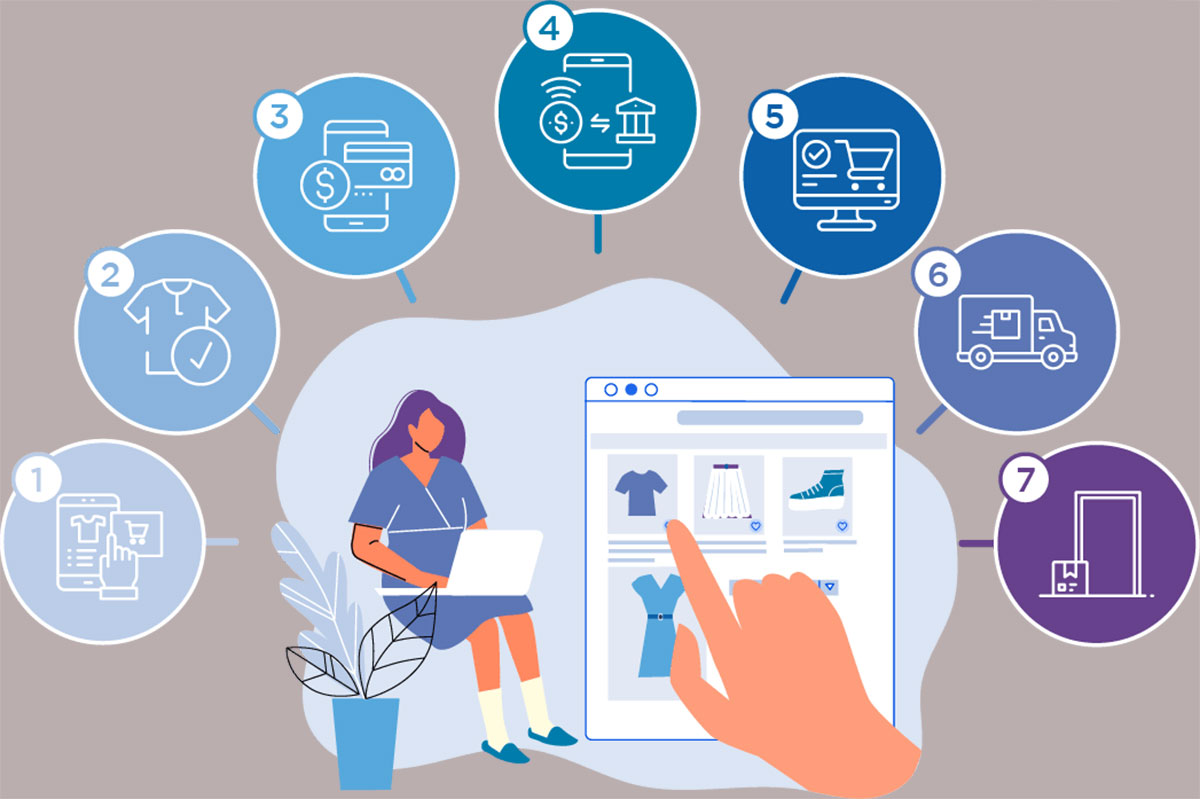E-commerce is booming. In the United States, there were 263 million online shoppers in 2019, which is expected to go up to 282.7 million by 2024. Globally, it is 2.64 billion in 2023.

Customer interest has clearly moved online. There are many big and small stores that are competing to gain the trust of the customers and trying to retain them. Ecommerce customer service will certainly make a critical difference.
A customer who doesn’t feel valued will definitely move on to a new online store. There are so many websites now that offer the same product. Customer service will also help the business create a loyal customer base and let the business receive positive feedbacks.
What is E-Commerce Customer Service?
E-commerce customer service refers to how an online business helps its customers in every possible way since his/her arrival at the store until the completion of the purchase and even after. It starts from helping the person make the right purchase decision and ends with resolving issues, if any.
In this digital age, e-commerce customer service is a prerequisite for business success. Data published by Microsoft, reveals that 95% of all customers value this extremely highly. The modern-day customers have really high expectations. With so many social media channels, a poor experience can quickly become viral. This is why it is essential to focus on providing the best possible experience.
6 Best E-Commerce Customer Service Practices
Always try to exceed the expectation of your customers. be consistent and try to excel and your buyer will stay with you and may even recommend others to your online store.
- Real-time Support With Live Chat
There are many tools these days, such as Chatbot and Live Chat that can be of immense help. These live engagement tools can help the person decide and guide him/her through the buying process. The response time is super fast. The person is less likely to leave the store if you can answer the concerns and queries instantly. Plus, your customer will know that you value his/her time and want to offer good service.
Live chat will also allow your agents to multi-task. They will be able to communicate with various buyers at the same time.
- In-App Support for Mobile Users
It is a mobile-first world now as a lot of people are using their mobile devices to purchase online. Even the biggest online stores like Amazon have their mobile apps. Even when they are visiting a physical store, many customers would use their mobile devices to check and compare the prices and products on the store’s mobile or app version. Many will also read reviews before making the purchase decision.
So, you have to make the smartphone buyer happy too. Allow mobile shopping if you are not doing this already. A chatbot for Shopify or WooCommerce can provide in-app support for the mobile users.
- Design A Honest Product Catalog
In a physical store, the salesperson will introduce the various products and explain their features. In an online store, a customer will find such information on product catalogs. You can be sure that almost all the buyers will read through the product descriptions before purchasing. Many people will approach you for support if the product descriptions are not adequate or if some key information is missing. There will be shopping cart abandonment if the discount coupon code is not working.
You will avoid a lot of requests for ecommerce support services by simply providing all the information for your customers. This will make your work easier later on. Focus on improving the design and quality of your product catalog. Add relevant photos from different angles. Make sure that each product has all the information.
- Personalize Your Interactions
Everyone wants personal attention. You can pamper them on their special days like birthdays and anniversaries. You can address them by name and make product recommendations. You can send follow-up messages, asking for user experience. There is so much to be done.
But can you do this on a large scale? This can be done if your agents are properly trained and if they want to ensure that every customer interaction is at a personal level. Ask them to use customer names on the live chat or on the phone interaction. Start a loyalty program to reward and recognize your repeat customers. You can even share a handwritten thank you note.
- Value Customer Feedback
A satisfied customer is likely to recommend your business. So, you must always thank a positive review. A feedback will give you important information on how your business is doing. You must also respond to negative reviews. Responding to them gives you the opportunity to explain your position and if needed you can even offer to replace the product. Apologize to the customer for the poor experience. There is no harm in doing this. Rather, you will show to the world that you genuinely want to make the customers happy and care about your reputation.
- Improve Your Response Time
In e-commerce, you need speed because the online customers are asking for prompt service. Give them multiple channels to reach your customer service team like online chat, in-app complain lodging, email, and phone number. Always respond to the queries, complains, and feedback quickly.
There is a difference between traditional customer service and e-commerce customer service. In the traditional world, you focus on phone or face-to-face conversations. It is more difficult online because you don’t interact with the person physically, which is why you must make that extra effort. You cannot read the body language and facial expression.
Try to delight the person at every stage and your customer will stay motivated about interacting with your brand.









